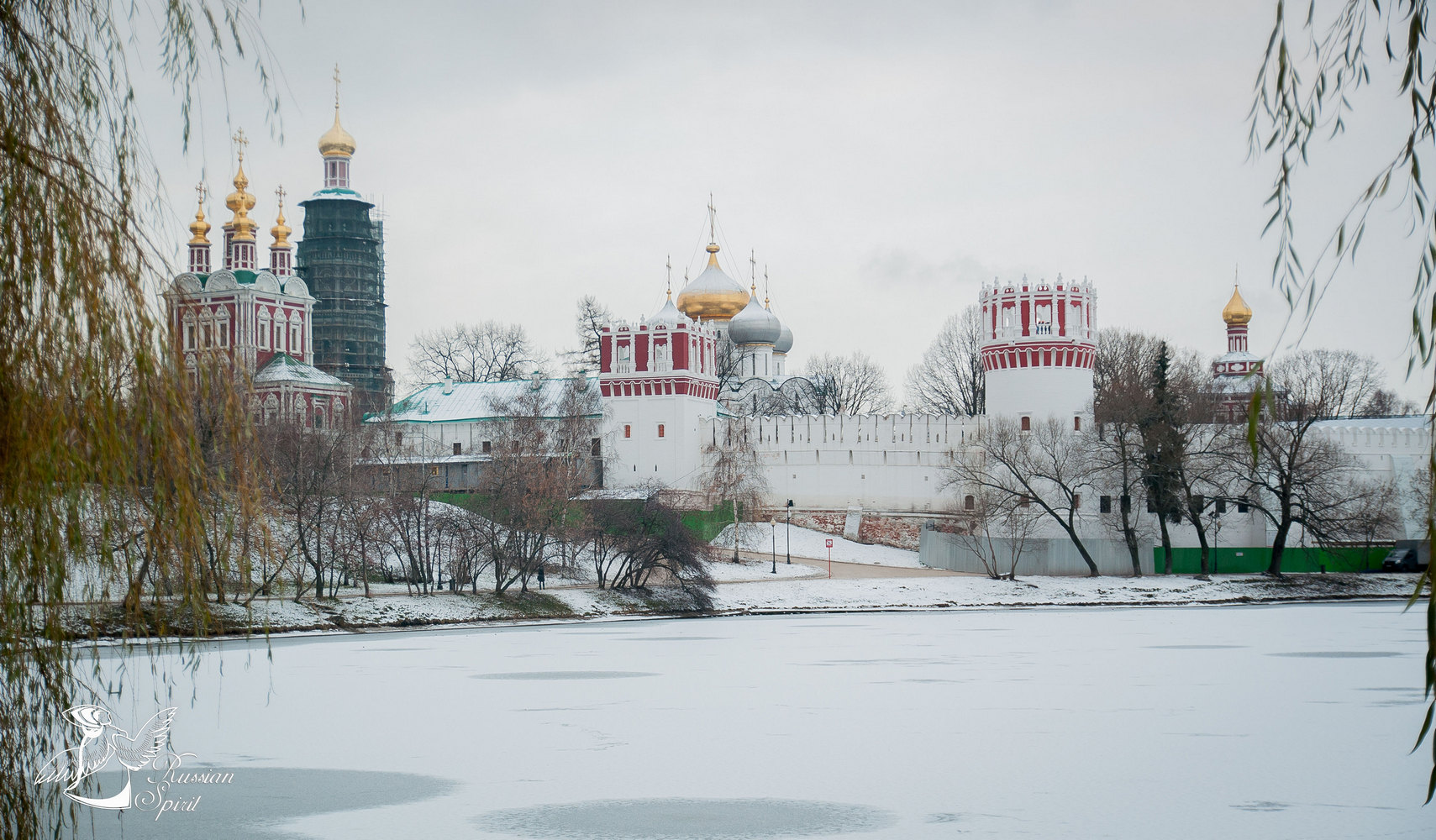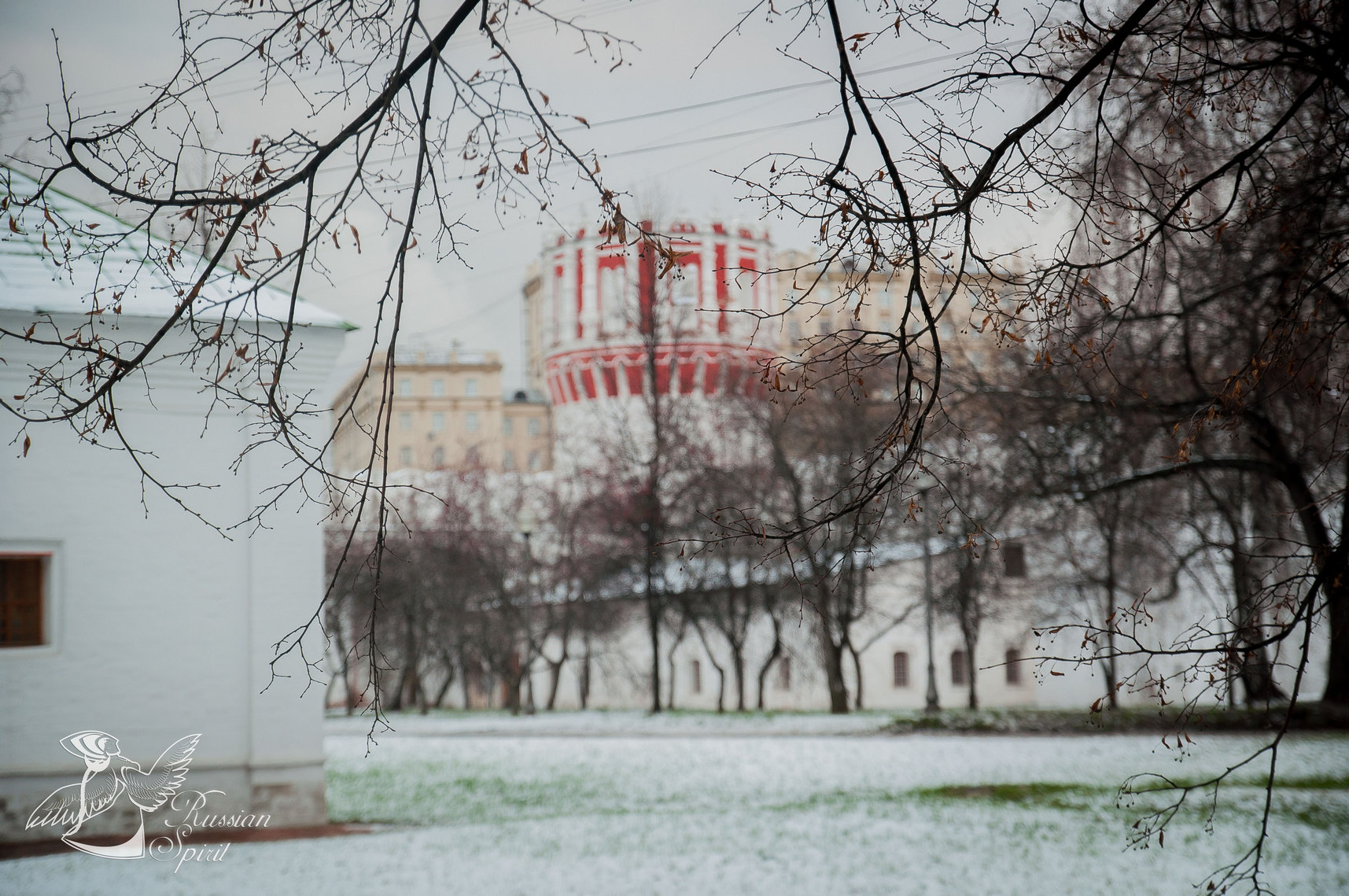You know, the numerous convents in Moscow decorate the city so much. Besides, all of them located within the precincts of the city are as ancient as Kremlin and are a historical museum.
Not all the cloisters were built for religious purposes. There were those with big rigid walls constructed at outskirts to protect the city against enemies. Later on, when Moscow expanded its borders, these cloisters lost their defensive function and got new architectural details. Even those cloisters who had never have a defensive function, were anyway surrounded by fortifications and very often served as incarceration.
One of the most amazing by their beauty and famous architectural complexes is Novodevichy Convent (Новодевичий монастырь). It is located on the south-west of Moscow surrounded by three parts by Moscow river and is a complex of 14 buildings including living, utility constructions, bell towers and churches.
Novodevichy convent (view from the pond)
The Novodevichy monastery was founded in 1524 in the suburbs of Moscow on the so named Devichy field. The legend says that it was named so because during the Mongol-Tatar Invasion the most beautiful Russian girls were being selected on this field for the Golden Horde.
The Grand prince Vasily III issued an order to build the monastery after the seizure of Smolensk during the war with Lithuanians and ordered to consecrate the main cathedral in honour of miracle-working Smolensk icon of the Mother of God “Odygytria”.
Smolensk cathedral 1524-1524
Initially the walls and the towers of the convent were wooden. And only by XVII century the territory was surrounded by brick walls with 12 towers. They were made upon the model of the Kremlin walls: the corner towers are round and the towers in the walls are square. The tops were decorated with merlons and the walls with stone carving. In the walls there were loopholes.
Nikolskaya tower
The place was located on the main Moscow ways crossing: land Smolensk road from the east and water way on Moscow river from the west. Surrounded by the high inaccessible walls the convent was intended to become not only a house of God but also a fortress on the way to Moscow. Even the nuns participated in the defence of Moscow. For example in 1812, when Napoleon retreating was trying to explore the monastary buildings, the nuns defused the warheads.
Long time it had been the most priviledged monastery of Russia, had the protection of the russian tsars and owned vast land domains.
In XVI-XVII centuries the convent was the place of taking the veil by the reppresentatives of the tsar dynasty as well as the women from the noble kins of that time, acquiring with that the right to be burried on the territory of the convent.
Angel and Pokrovskaya gateway church 1687-1688
The first russian “autocratic” tsarine Irina Godunova, tsarevna Sofia (after unsuccesful conspiracy against Peter the Great) took the veil in the Novodevichy convent; here spent her last days the first wife of Peter the Great Eudokia Lopukhina. The tombs of Sofia and Eudokia are conserved and located in the Smolensk cathedral of the monastery.
The Necropolis, appeared here in XVI century was enlarged greatly, and also many famous statesmen, heros of the war, writers and scientists were burried here.
After October revolution the Novodevichy convent was abolished but in 1922 it was announced a museum and thanks to that a unique architectural complex was conserved almost intact. The complex is distinguished by its integrity and authenticity: it was not exposed to any reconstructions, there are no reconstitued objects here, only restoraton and conservation works are being done.
Uspenskaya church with refectory 1685-1688
As a unique by its integrity pattern of Moscow barocco, the monastery is put under the guarding of UNESCO and is announced as human heritage.
Opening hours: from 10:00 till 17:30 every day, except Tuesday (free day) and the first Monday of each month (cleanup day).
Address: Novodevichy proezd, 1.
Metro station: Sportivnaya.
Admission free





